Just yesterday, while reaching into my barrister for an antique book from my collection, I selected The Mountaineer. Published initially in 1818, it’s simply an assembly of articles (usually morality-based), previously written by Presbyterian Rev. Conrad Speece, for a newspaper in Augusta County, Virginia. With a random flip of the pages, I came across the word “Reading”, which quickly made me pause and pay attention. Reading the first few lines (incidentally, this particular article was extracted from February, 1814), I found it interesting to see Speece’s thoughts (especially as they are of a time over 200 years ago) on the importance of reading. I was particularly drawn-in over how some of what he said then applies even to today (quite literally when considering this being an election year).
Instead, then, of reading nothing, or confining ourselves to the newspaper effusions of angry political disputants, it becomes us to acquire, by extensive investigation, a proper acquaintance with our own nature, and the modes in which our passions operate.
As I moved further into the piece, I also realized he was addressing the importance of writing… especially writing good material… and the need for people to be discerning when it comes to writings they read.
You find some scrap called history; but presently ascertain it to be a mere chronicle of facts, as dry and empty as the shells of birds’ eggs strung upon a thread, but without any of their prettiness.
Furthermore, it dawned on me how Speece, in the very article he wrote, was attempting, himself, to engage readers in his own writing (and, I think, seemed to be doing it well).
As I’m always curious as to what goes on (#writingasprocess) in the heads of writers (especially my quirky fascination with the process of American writers in the 19th century), I found this an excellent piece and thought it worthwhile to share. You may find the language a bit antiquated but give the reading a try, and see if what you read triggers you to think of how what he said over two hundred years ago can apply to us (as readers and writers), today.
On a Taste for Reading
To a man who loves books as he loves his daily bread, it must be painful to observe how low the taste for reading stands in our country. It is said, I hope truly, that we read more than our forefathers did an age or two ago; but we certainly still fall short in our propensities this way, far show of what is practicable and much to be desired.
I am not going to make a laboured essay on the advantages of reading; but I cannot let the subject pass without a few remarks. As rational beings, we ought to read for the cultivation and enlargement of our minds. Is not the mind our noblest and most important part? Is it not then a shameful thing to neglect it, and lay out all our care in feeding and decorating the body? As Christians, we are bound to read, that we may improve ourselves in the best kind of knowledge. The bible is so admirably constructed as to make the weakest sincere inquirer wise to salvation, and at the same time to afford interesting and edifying instruction to the ablest one through the whole course of life. As American citizens, we ought doubtless to be a reading, thinking people. We choose our own rulers; and they must in various ways be influenced by our sentiments, and even by our passions. Instead, then, of reading nothing, or confining ourselves to the newspaper effusions of angry political disputants, it becomes us to acquire, by extensive investigation, a proper acquaintance with our own nature, and the modes in which our passions operate. Of all people, I think republicans ought to be the most diligent students of history; that they may discern those perilous rocks and shoals on which the bark of liberty has been so often wrecked. In addition to all this, I observe that a strong taste for reading in a source of enjoyment with which few others can bear to be compared. Its pleasures, provided we select our matter rightly, are pure, elevated, and durable; and can only be exceeded in value by those of devotion and the interchange of kind affections.
But many will agree with me in the general importance of a habit of reading, who nevertheless read little or nothing. My chief object in this paper is to canvass their pretexts and excuses.
It is pleaded by some, with too much cause, that they have no relish for reading; and that a book, instead of interesting them powerfully, rather disposes them to drowsiness. When these things are said by persons who have arrived at the middle of life, or advanced beyond it, the disease of their minds, (for so I must call it,) is scarcely curable. The taste must be acquired by practice; and the practice ought to be begun in the days of youth. Afterwards it is commonly too late. I entreat parents, even these who have no delight in reading, to take pains in training their children to delight in it. And here I cannot help saying I do not at all wonder that so many young people grow up without considerable inclination to reading, when I find so little care employed to furnish them engaging books. How could any other effect be looked for? You go to the corner of the house, – I always give my earliest inquisition to it, – which purports to contain the library. In the room of works adapted by their vigour of thought and beauty of style to excite and to gratify curiosity, and embracing such a variety of subjects as to allure the flagging attention, you see only a few old, tattered volumes, handed down through two or three generations, as dull in their matter as they are disgusting in their manner. You lay your hand upon some starched, antiquated book on religion; and after a little inspection, you wonder how such a book could possibly be read, even three ages ago. Your eye meets pages which wear a seeming as if they were intended for poetry, but which have not one lineament of genuine poetry about them. You find some scrap called history; but presently ascertain it to be a mere chronicle of facts, as dry and empty as the shells of birds’ eggs strung upon a thread, but without any of their prettiness. You exhort the owner of this scanty, hereditary lumber to dedicate some of his abounding dollars to the purchase of new and well chosen books. He hears you with entire coolness,-and then answers, with an air of compassion on you for your simplicity, that he has books enough, more indeed than he reads. As to his children, he wishes them to make a good use of the books they have, before they tease him for fresh ones. Thus things go on in many a family. The less the old, ragged books are read, the longer they will last, and serve to shut mental improvement and polish out of doors.
Some plead that they have little or no time for reading. Well, I know that mankind are placed in various situations, and I do not mean to urge impossibilities. What I wish to see is a careful redemption of time for reading, as well as for other useful and laudable purposes. Would to God that we all seriously considered how much time we waste in unnecessary and even pernicious relaxation. Fifteen minutes spent on the pages of a good book may produce some sensible pleasure and profit, nay, even a high degree of both. Yes among those who do not give fifteen minutes once in a week to reading, and assign the want of time as their excuse, you may observe many who squander hours in needless sleep, idle visits, frivolous or mischievous conversation, and dissipating amusements. What would you think on hearing a farmer say that he lacked time for repairing his prostrate fences, and destroying the weeds and briers which were devouring his fields, while you saw him busily engaged in hunting butterflies? The same must we think of one who throws away precious time in folly and trifling, and yet pretends to have no leisure for the improvement of the mind.
People sometimes say they would willingly purchase valuable books, did they but know to distinguish them from the mass of trash with which they are mingled in the literary market. I know that this want of skill is a frequent and a serious evil; and I know also that, besides the expense of money and time, it is worse to read a bad or a foolish book than to read none. But the remedy for the evil is not difficult to be found. Go to some friend in whose correctness of principle and maturity of knowledge you can place confidence, and get the assistance which you need in selecting books of sterling merit.
The last plea which I shall notice is the high price of books, reinforced with the scarcity of money. Now money is always said to be scarce by those who are not willing to part from it. I do not remember a time when this same complaint was not repeated by many. Books have, indeed, risen greatly in price within a few years; yet I believe they are as easy to be procured now as they formerly were. However, I admit that there are many worthy people who have but little money to spare for this sort of property. In this view, a social or neighborhood library is of great importance. Obvious as the thing is, perhaps some of my readers have never thought of it, that twenty families, for an expenditure of ten dollars worth of literature. But as such a scheme frequently cannot be accomplished, I observe farther that, costly as books are, it requires no enormous sum of money to obtain an excellent library. Only let the heart be set upon the object; and let care be taken to buy none but books of the highest value for their matter and composition. As to the gaudy external decorations of a book, which go far to swell the price, I suppose a judicious mind must think as little of them as of fanciful extravagance in dress or furniture. I take the liberty of recommending to every young couple, when they set up housekeeping, whether they be rich or poor, to consider a good collection of books as one of the necessities of life. It is, indeed, not only a necessary, but also a luxury, in the best sense of the word. Let it be made a principle that books are wanted, even as other things are wanted, in order to comfortable and pleasant living. And let efforts be made that something may still be added successively, in the progress of time, to the stock of nourishment for the mind.
Could I prevail with my fellow citizens to adopt the sentiments which I have offered on this subject, I feel confident that they would very generally find it practicable to get good books to read, and time for reading them; and that the following of my advice would produce much advantage to their morals, and greatly increase the happiness of their lives.

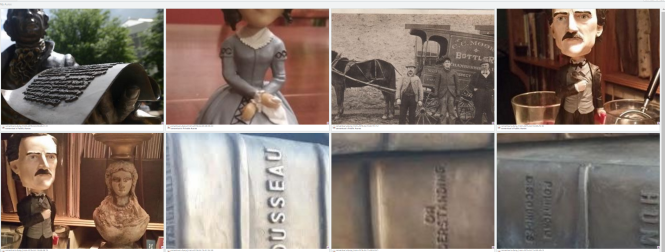
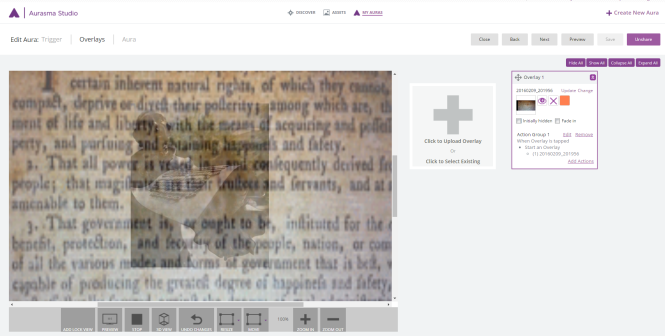
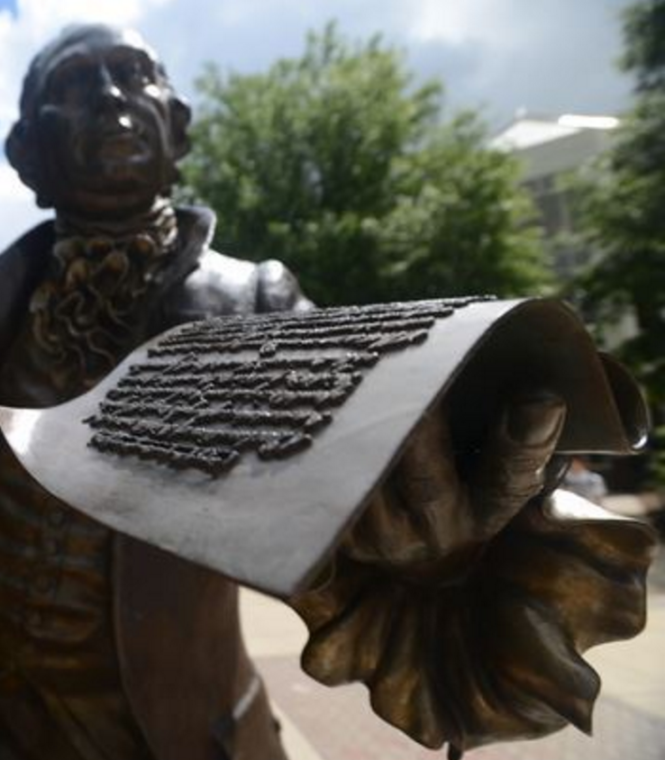
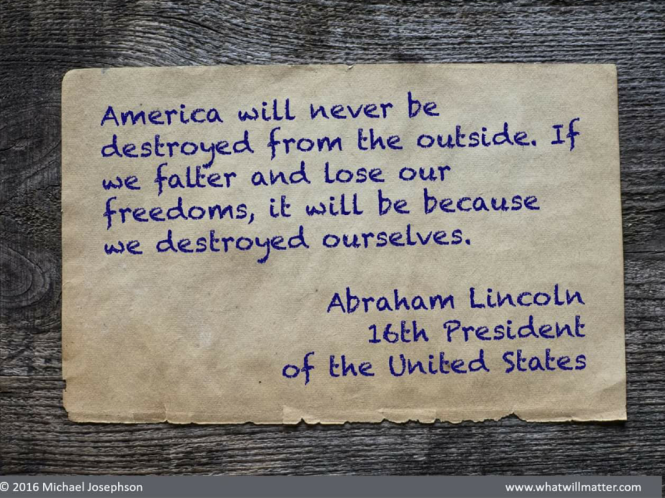
 With the passing of Pat Conroy, yesterday, we lose yet another great “Southern” writer. Of course, I can’t let the Southern/Southron thing go without some degree of explanation (at least for those who aren’t familiar with the background). Conroy was born in Atlanta, but his roots were Northern/Southern… his father being from Chicago, and his mother from Alabama.
With the passing of Pat Conroy, yesterday, we lose yet another great “Southern” writer. Of course, I can’t let the Southern/Southron thing go without some degree of explanation (at least for those who aren’t familiar with the background). Conroy was born in Atlanta, but his roots were Northern/Southern… his father being from Chicago, and his mother from Alabama.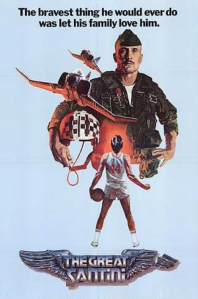 I don’t think I really appreciated it as well as a kid as I do now, but in The Great Santini, Conroy was the first (at least in my memory) to give folks a glimpse into this subculture. Though my first exposure to the work was through the movie of the same name (I remember quite well going to the theater and watching it by myself… in Jacksonville, NC), I found the representation of the character, Lt. Col. Wilbur “Bull” Meechum, familiar, but oftentimes disturbing. I think it still says something that I don’t have a copy of it in my DVD collection (though I find myself, at this moment, wanting to watch it again). The best way I know how to describe it is… think of something with which you can strongly relate, but would prefer not always revisiting. “Bull” Meechum represented a lot of what some might term “Old Corps”, and frankly, another generation altogether. Military “brats”… and especially “Marine brats” of my generation (Vietnam era kids) can relate to aspects of Meechum’s personality… whether experienced firsthand, or in what was shared with us, from another Marine brat, about their Marine parent. I may be wrong, but I think the current generation of Marine brats could claim a subculture similar to that which I belonged, but distinctive in its own right. Is there, I wonder, still a representation of the “Old Corps” in the current subculture of “Marine brats”, or has it, like the real Corps, shifted in a different direction?
I don’t think I really appreciated it as well as a kid as I do now, but in The Great Santini, Conroy was the first (at least in my memory) to give folks a glimpse into this subculture. Though my first exposure to the work was through the movie of the same name (I remember quite well going to the theater and watching it by myself… in Jacksonville, NC), I found the representation of the character, Lt. Col. Wilbur “Bull” Meechum, familiar, but oftentimes disturbing. I think it still says something that I don’t have a copy of it in my DVD collection (though I find myself, at this moment, wanting to watch it again). The best way I know how to describe it is… think of something with which you can strongly relate, but would prefer not always revisiting. “Bull” Meechum represented a lot of what some might term “Old Corps”, and frankly, another generation altogether. Military “brats”… and especially “Marine brats” of my generation (Vietnam era kids) can relate to aspects of Meechum’s personality… whether experienced firsthand, or in what was shared with us, from another Marine brat, about their Marine parent. I may be wrong, but I think the current generation of Marine brats could claim a subculture similar to that which I belonged, but distinctive in its own right. Is there, I wonder, still a representation of the “Old Corps” in the current subculture of “Marine brats”, or has it, like the real Corps, shifted in a different direction?
You must be logged in to post a comment.